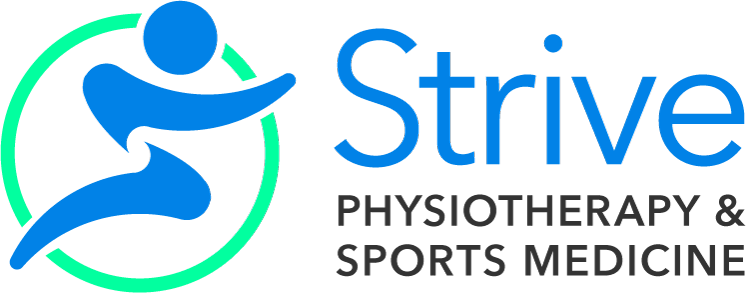Resistance training uses body weight, resistance bands, machines or free weights to improve muscular strength, endurance and power. The goal is to use these forms of resistance as a stimulus to challenge your muscles to the point where they adapt and become stronger.
What are some of the benefits of engaging in regular resistance training?
- Increased muscular strength: enhances overall strength and functional capacity
- Improved joint health: supports joint stability and function
- Improved mobility: decreases injury risk, contributes to prolonged independent living and higher quality of life.
- Improved bone health and muscle mass: helps combat bone density loss and muscle atrophy
- Reduced fall risk resulting in less fractures: increases lower extremity strength improving the ability to your recover balance
Who can benefit from a resistance training program?
- Athletes looking to improve strength, speed and explosiveness to enhance sport performance
- Individuals who have fully recovered from injury (ex: ACL reconstruction) looking for additional programing to focus on improving performance and injury prevention post rehab.
- Weekend Warriors looking to build upon or begin a resistance training program that considers and addresses their previous injuries while also working towards strength and conditioning goals.
- Individuals of all ages looking to promote overall health and well-being.
The importance of a good warmup!
Before a resistance training session, it is important to warm up properly. A well structure warm up is meant to increase the blood flow to your muscles, raise your body temperature and prepare the muscles and joints for the demands of exercise. Your warmup should include some light cardiovascular exercise to raise your heart rate and dynamic (movement-based) stretches and exercises to activate the target musculature. This reduces the risk of injury and helps improve performance. Not sure where to start? Check out the upper and lower body warm up programs. Please note these routines were designed as a place to start and do not replace the value of being assessed by a Health Professional like a Physiotherapist. These exercises should not be performed or continued if they are uncomfortable or cause pain.
Types of resistance training programs based on your goals:
Below are some general guidelines for structuring your resistance training program based on your specific goals. The intensity is measured as a percentage of your calculated one-rep maximum (1-RM), the heaviest weight that can be completed for a single repetition. There are a number of available online calculators that can help you calculate your 1-RM. Alternatively, you can begin by using a weight that is challenging for the selected number of repetitions to establish a baseline to progress from.
Endurance
- Frequency: 2-3x per week
- Intensity: 40-50%1RM
- Type: Can include a variety of bodyweight or banded exercises, machines and free-weights.
- Volume: 15-25 reps x 1-2 sets, 30-90 seconds rest each set
- Progression: increase the sets, reps or decrease rest per set.
Strength
- Frequency: 3-6x per week
- Intensity: 60-70% 1RM
- Type: Can include a variety of bodyweight or banded exercises, machines and free-weights.
- Volume: 8-12 reps x 2-4 sets, 2-3 minutes rest each set.
- Progressions: increase reps or increase resistance
Power
- Frequency: 2-3x per week
- Intensity: 80-100%1RM
- Type: Can include a variety of bodyweight or banded exercises, machines and free-weights.
- Volume: 3-6 reps x 1-3 sets, 3-5 minutes rest each set
- Progressions: increase the speed of the movement or increase resistance
Basic movements of resistance training
Resistance training in its simplest form can be broken down into the following basic movements:
-
- Horizontal Press: E.g., Push-ups, bench press
- Horizontal Pull: E.g., Seated row, bent-over row
- Vertical Press: E.g., Pike push-ups, shoulder press
- Vertical Pull: E.g., Chin-ups, lat pull-down
- Squat: E.g., Lunges, split squats
- Hip Hinge: E.g., Deadlifts, glute bridges
A program that balances these basic movements (ex: pushes with pulls, hinges with squats) ensures that opposing muscle groups around a joint are trained equally, which can help promote joint stability and decrease injury risk.
Where should I start with resistance training?
When resistance training for the first time or adding a new exercise to your routine, it is best to begin using lighter weights for higher repetitions. This will help you improve your confidence, establish a routine and focus on improving form, allowing you to transition to higher weights safely when you feel you are ready to progress the intensity.
How many times per week should I be resistance training?
While training at least twice per week is enough to experience the health benefits associated with resistance training, advanced lifters may train 3 to 6 days per week depending on their goals. It is important to at least 48 hours rest between training the same muscle groups to allow time for that region to recover and adapt to the exercise stimulus. Some examples of what this can look like are engaging in a full body exercise program 2-3x per week or alternating between days focussing entirely on pushing, pulling and lower body movements.
When should I expect to start seeing results?
In the first 8 weeks of starting a resistance training program, you may experience a rapid increase in strength. This is due to neural adaptations in the body that improve the brain’s ability to recruit the muscle fibers required for the movement and creating a more efficient movement pattern. Building muscle mass on the other hand, can take anywhere from 8-12 weeks of consistent training.
How can Physiotherapy help me with resistance training?
Physiotherapy offers a unique approach to resistance training that sets it apart from other professionals such as personal trainers. With specialized training in movement assessment, biomechanics and human physiology, your Strive physiotherapist can conduct a comprehensive physical assessment to identify muscle imbalances, inefficient movement patterns and movement restrictions that may be limiting performance or contributing to pain. Combining this information with a detailed assessment, your physiotherapist can tailor your resistance training program to your specific needs. They will work with you to modify an existing program or create an entirely new one to address these findings, ensuring your program aligns with your specific strength and conditioning goals and takes into consideration any previous injuries that may be impacting performance.
As an expert in a wide range of myofascial release techniques, your physiotherapist is able to augment your exercise program by targeting and releasing muscles that may be contributing to movement restrictions, aches, and pains that may be interfering with your training. Physiotherapists can also help you manage progressions, incorporate mobility programming, and provide education on recovery strategies to optimize your outcomes and gains.
Have any additional questions about how physiotherapy can help with resistance training? You can book a free 10-minute phone consultation with Stefanos Goulas, a Physiotherapy Resident with an extensive background in strength and conditioning and a passion for helping his patients meet their personal and athletic goals. Please give us a call at 416-486-4776 or book a 10 minute Ask a Physio Complimentary Q&A appointment online!
Note: This page is intended to provide basic information on resistance training and is not meant as a replacement for an individualized exercise program. If you are unsure if engaging in resistance training is safe for you, consult your doctor before adding this type of training into your routine.

Stefanos Goulas
HBScKIN,MScPT
Registered Physiotherapist
Growing up playing football, rugby and lacrosse, Stefanos received extensive coaching in strength training, Olympic lifting and sprinting. His personal and clinical experience in these areas has instilled a deep understanding of the biomechanical and technical demands necessary for peak athletic performance. Stefanos believes that successful rehabilitation goes beyond simply treating an injury; it requires an understanding the whole person, their lifestyle and their goals. He integrates exercise prescription, manual therapy and education to create individualize treatment plans tailored to each patients’ unique needs. Whether he is working with athletes or members of the community, Stefanos is committed to helping his patients meet their goals and return to the activities they enjoy with confidence. Originally from British Columbia, Stefanos relocated to Ontario to pursue post-secondary education, earning an Honors Bachelor of Science in Kinesiology from McMaster University and a Masters in Science in Physical Therapy from the University of Toronto.


